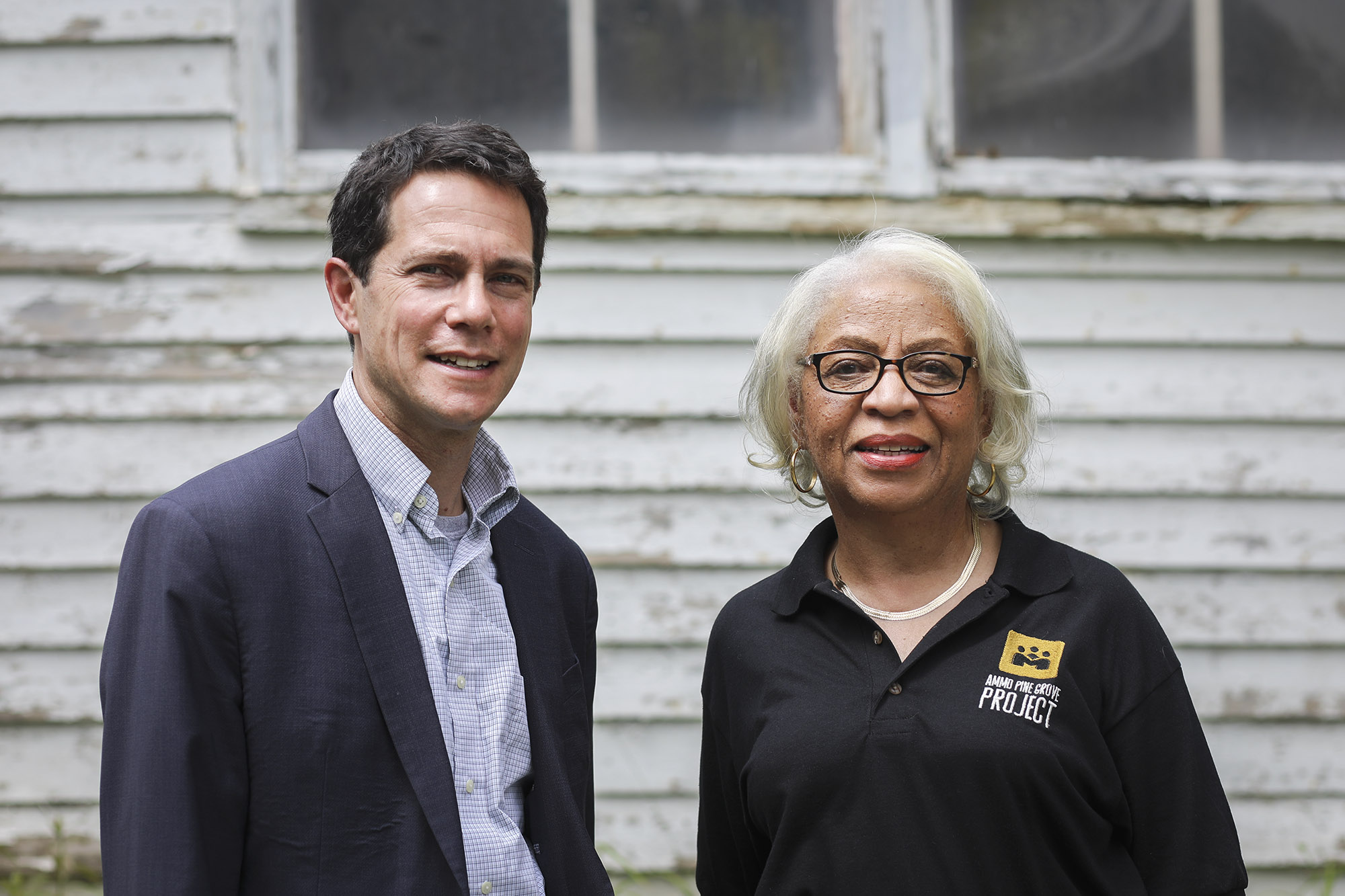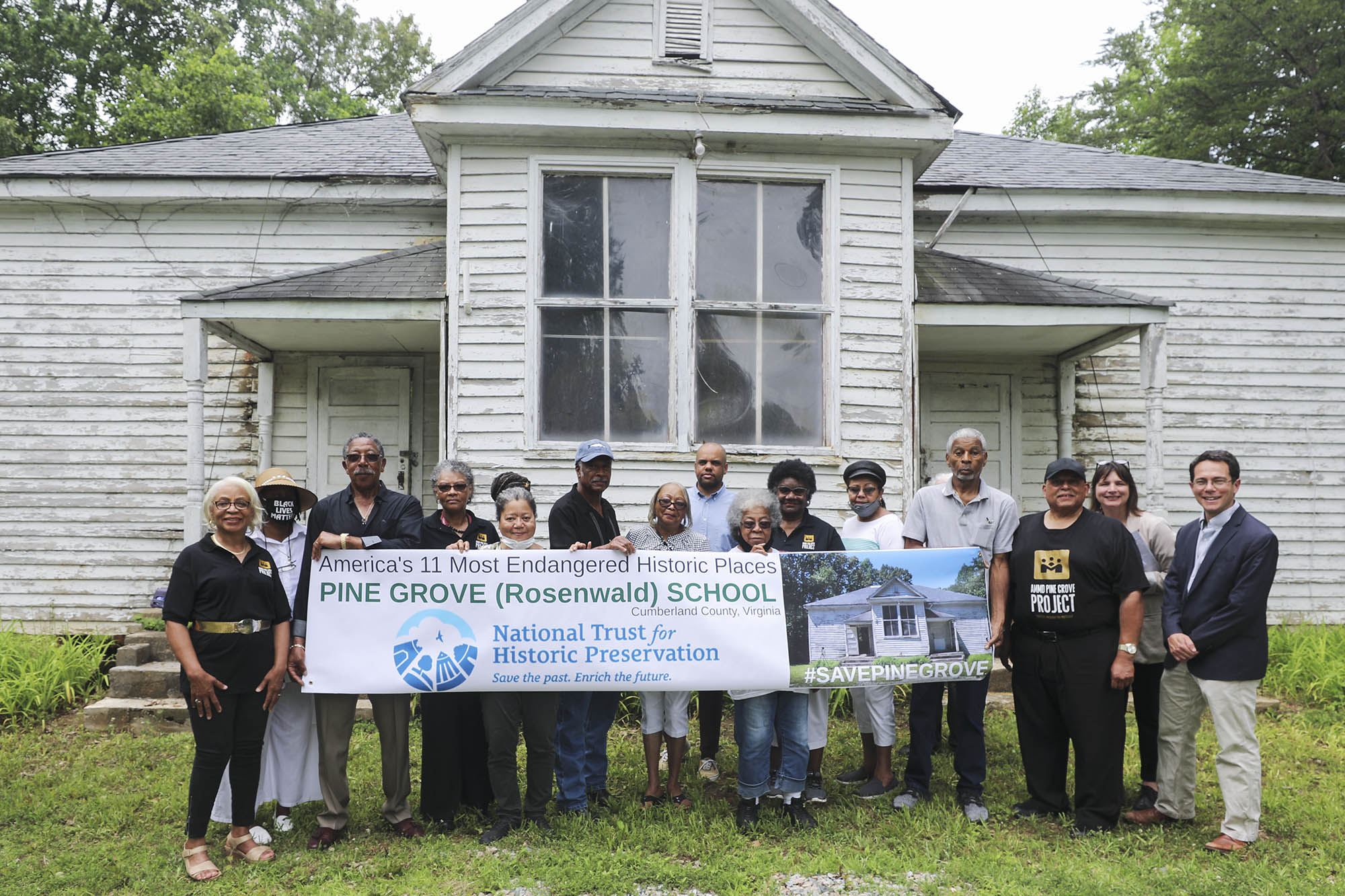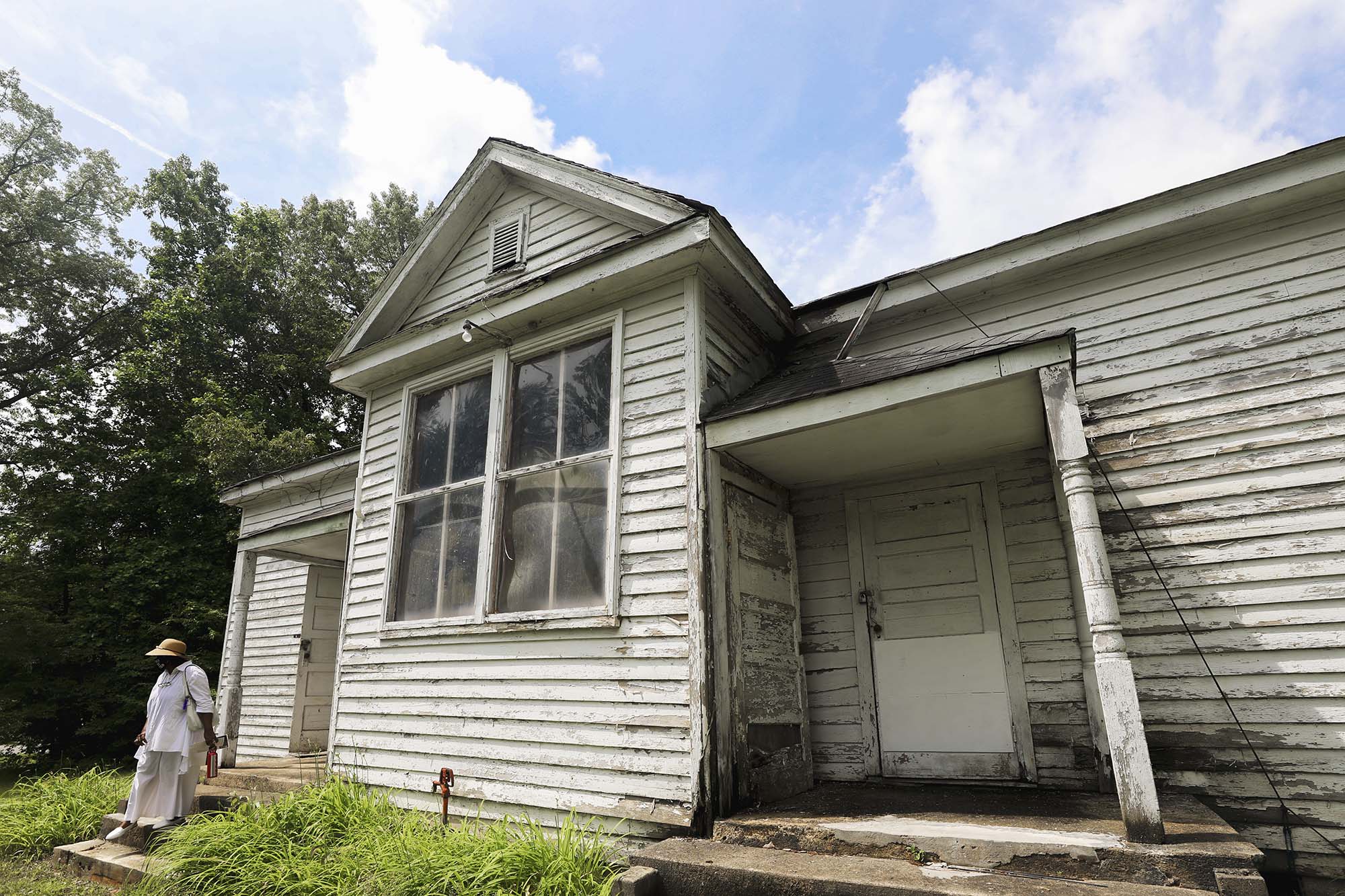A historic African American schoolhouse in Central Virginia that a University of Virginia School of Law clinic is helping to preserve was recognized last week by the National Trust for Historic Preservation, improving the chances the site may be saved.
Pine Grove Elementary School in Cumberland County was listed among America’s 11 Most Endangered Places for 2021. The designation may help advocates seeking to turn back a proposed landfill that could undermine plans to maintain the school as a community center where visitors could learn about the school and those like it.
The schoolhouse was built in 1917 as one of nearly 5,000 “Rosenwald Schools” in the South to educate Black children during the Jim Crow era, supported by philanthropist and Sears Roebuck President Julius Rosenwald. Preservationists estimate that only 10% to 12% of Rosenwald Schools remain. UVA Law’s Environmental Law and Community Engagement Clinic has been working with its client, the AMMD Pine Grove Project, since January 2020 to find ways to guarantee protection not just for the school, but for the historic community of which it was the center.
Muriel Branch, president of the project, said Thursday at an event to mark the National Trust announcement that the designation gives the community an opportunity to increase awareness at the national level. Referencing her family’s history, she compared the work needed to prepare a field for crops with the work needed to build a coalition that could protect Pine Grove.

Professor Cale Jaffe, left, director of the Environmental Law and Community Engagement Clinic, with Muriel Branch, president of the AMMD Pine Grove Project. (Photo by Julia Davis)
“This is more than a building. This is where our value systems were made stronger,” Branch said. “My parents were farmers, and I learned you had to agitate. ... You have to break up the ground before you can plant.”
The annual America’s 11 Most Endangered Places list has identified over 300 sites nationwide since 1988. Of the sites that received the designation, only “a handful” have been lost, the trust says on its website.
The Army Corps of Engineers and the Virginia Department of Environmental Quality are currently reviewing permit applications for the proposed Green Ridge Recycling and Disposal Facility, a 1,200-acre site that would be developed adjacent to the school. The Corps is currently considering whether an environmental impact statement is needed.
The AMMD Pine Grove Project argues that such a facility would disrupt their goal of using the school as a community center. Founded to preserve the schoolhouse and its history, the project is spearheaded by families with deep ties to the region, whose historic family names are reflected in the initials of its name: Agee, Miller, Mayo and Dungy.

Community members and stakeholders gathered last week to recognize the school’s designation by the National Trust for Historic Preservation. (Photo by Julia Davis)
Law students have been helping the community navigate the state and federal permitting process to ensure all safeguards are followed. That work has led to interdisciplinary collaborations across the University. Professor Schaeffer Somers of the UVA schools of Architecture and Medicine has worked with students on the early stages of a health impact assessment of the proposed landfill. Genevieve Keller, an adjunct faculty member in historic preservation in the Architecture School’s Department of Urban and Environmental Planning, has led students on an investigation of the broader historic community around the school.
Law professor Cale Jaffe, the clinic’s director, said the term “environmental justice” is rooted in an understanding that people of color and low-income residents are more likely than the population at large to suffer adverse effects from major environmental permitting decisions.
“When we first began on that partnership, I thought that our law students would delve into the legal research, and that they would share their developing expertise in environmental and regulatory law,” Jaffe said at the event Thursday. “But the more I got involved, the more I came to realize that the most important thing that we can do is to listen. That’s true for my students as budding lawyers and for me as a law professor.”










